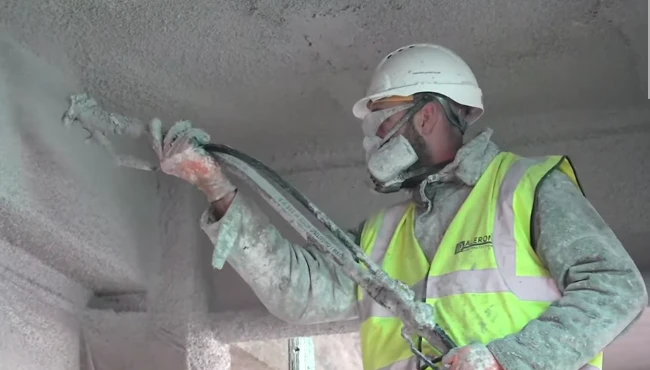What does a ceiling fixer do?
A ceiling fitter is a skilled tradesperson who is responsible for the installation and repair of ceilings. Their expertise goes beyond the purely cosmetic aspect; they are adept at working with different materials such as plasterboard, metal frames and insulation. They are often closely associated with drywall installers (dryliners), who focus on installing interior walls, while ceiling installers put the finishing touches on often overlooked ceiling surfaces.
Required skills
A ceiling fitter must have a keen eye for detail, take precise measurements and a knack for problem solving. Manual dexterity is crucial, as the job involves working with tools and materials in sometimes awkward positions. Effective communication skills are also essential, as ceiling fitters often work with other construction professionals to ensure a harmonious end result.

Qualifications
Advancing in this field often starts with achieving National Vocational Qualification (NVQ) at eithr Level 2 or Level 3 in Interior Systems. This formal recognition ensures that ceiling fixers have the necessary skills and knowledge to carry out high quality work. Holding a blue CSCS or gold CSCS card further enhances employability and signifies a commitment to safety standards.
Benefits
Being a ceiling fixer offers great benefits. It’s a hands-on job that improves your physical skills and attention to detail. You can enjoy steady demand since construction and renovations always need skilled workers. The role often provides good pay and opportunities to work on diverse projects, from homes to commercial spaces. Additionally, learning this trade can lead to career growth, like becoming a supervisor or starting your own business. It’s a practical and rewarding profession.
Challenges
The work can be physically demanding, as ceiling installers must work in a variety of conditions and sometimes at great heights. Meeting deadlines and completing multiple tasks simultaneously is often a challenge. However, for those who thrive under pressure and enjoy hands-on work, these challenges can become stepping stones for personal and professional growth.
Career path and progression
A ceiling fitter’s career often begins as an apprentice working alongside experienced professionals. With time, dedication and the right qualifications, you can progress to a supervisory role or a management position. Some even specialize in niche areas of ceiling installation to expand their expertise and marketability.
Statistics
Ceiling fixers (dryliners) in the UK* – Prognosis
Average Annual Increase
ARR**
SOURCE: CITB ” Labour Market Intelligence Report (2024 – 2028)”.
* These prognosis calculations assume constant ARR and growth rate without significant external disruptions.
** ARR – Annual Recruitment Requirement is a metric used to estimate the number of new workers needed annually to meet labour market demands in a specific industry, region, or occupation.
How much could you earn as a ceiling fixer
Ceiling fixers and dryliners in the UK earn varying wages based on experience and employment status. Entry-level employed workers earn around £16 per hour (£26,600 annually), while experienced ones can earn up to £24 per hour (£42,000 annually). Self-employed individuals charge approximately £20 per hour, with daily earnings ranging from £160 to £200, depending on experience and location.
*Information sourced from reputable recruitment sites and agencies, reflecting the latest job market insights and trends. Figures can vary based on factors such as specific job requirements, individual qualifications, and regional economic conditions. Additionally, self-employed professionals should account for expenses such as tools, materials, insurance, and transportation when calculating their net earnings.
Typical hours per week
Standard work hours per week
(Employed)
Working hours per week with overtime
(Employed and Self-employed)
Ceiling fixers typically work full-time hours, averaging around 40 to 45 hours per week. However, project deadlines or specific requirements may lead to variations depending on specific job requirements. The flexibility of working hours can be a bonus for those seeking work-life balance.
Conclusion
The work of a ceiling fitter is not just about constructing ceilings, but about shaping the essence of a space. With the right skills, qualifications and commitment, this profession can be a rewarding journey into the world of construction and open the doors to a fulfilling and dynamic career in the vibrant world of construction.

